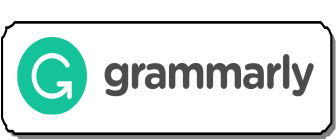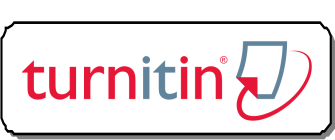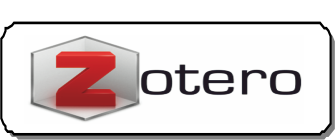Unleashing the Power of Family Education in the Post-Covid-19 Era: Quranic and Hadith Perspective
Abstract
In the post-pandemic era, the strength of the family is crucial in facing various challenges. In this context, family education plays a vital role in shaping a strong and resilient family. With the perspective of the Quran and Hadith, family education can be optimized to produce a more robust, resilient, and positively contributing family in society. Family education can cover various aspects, including character education, religious education, and social skills, all of which can be linked to the perspective of the Quran and Hadith. Therefore, the revitalization of family education in the post-COVID-19 era is essential to create stronger and more resilient families in facing an uncertain future. The method used is a literature review and content analysis of verses from the Quran and Hadith related to family and education. The data collected were analyzed using a qualitative approach and interpreted according to the current context. The results of this study show that the Quran and Hadith provide clear and practical guidance for forming strong and resilient families in the post-COVID-19 era. The perspective of the Quran and Hadith can help families build confidence, a spirit of mutual respect, and strengthen the sense of responsibility and unity within the family. The conclusions of the findings of this study contribute that family education also help families face various challenges and complex situations in the post-COVID-19 era. Families can harness the wisdom of the Quran and Hadith to build strong foundations, foster harmonious relationships, and effectively navigate the challenges of the post-COVID-19 era. This will contribute to the development of resilient and thriving families in the broader context of society.
References
Abu ‘Abd Allah Muhammad al-Qurthubi, Al-Jami’ li Ahkam al-Qur’an (Kairo: Dar al-Sya’b, 1951).
Ahmad Warson Munawwir, Kamus Al-Munawwir (Surabaya: Pustaka Progressif, 2002).
Abu al-Husain Ahmad ibn al-Faris Ibn Zakariyya, Al-Mujam al-Maqayis fi al-Lughah. (Beirut: Dar al-Fikr, 1994).
Ali ibn Muhammad ibn ‘Ali al-Jurjani, Al-Ta’rifat (Beirut: Dar al-Kutub al-‘Ilmiyyah, 1988).
Abu Dawud Sulaiman bin Ats-Ats as-Sajastani dalam Sunannya Kitab As-Sunnah bab fi Diroril Musyrikin (Beirut: Darul Fikri, 1414 H).
Abu Dawud, Sunan Abu Dawud, Al Maktabah As Syamilah: As Sholat.
Cena, Elida, Paul Toner, Aideen McParcland, Stephanie Burns, and Katrin Dudgeon. “Studying and Learning Psychology During the COVID-19 Pandemic: A Mixed-Methods Approach on Students’ Perspectives of Psychological Well-Being and Adjustment to Studying Online.” Psychology Learning & Teaching, 2023, 14757257231169938. https://doi.org/10.1177/14757257231169938.
Dayal, Surbhi. “Online Education and Its Effect on Teachers during COVID-19—A Case Study from India.” PLOS ONE 18, no. 3 (March 2, 2023): e0282287. https://doi.org/10.1371/journal.pone.0282287.
F. Rene Van de Carr dan Marc Lehrer, While You’re Expecting Your Own Prenatal Classroom (Cara Baru Mendidik Anak Sejak dalam Kandungan), Terj. Alwiyah Abdurrahman (Bandung: Mizan Media Utama, 2008).
Hasan, M. The Parent-Child Relationship in Islam. Journal of Religious Ethics, 45(3), (2017). 556-580.
Ibrahim, A. K. The Concept of Education in Islam: A Framework for an Islamic Philosophy of Education. The Islamic Quarterly, 61(1), (2017). 67-84.
Ibrahim, S. I. (2019). Education in Islam: A Historical Overview. Religious Education, 114(1), 43-53.
Imran, Rabia, Afsheen Fatima, Islam Elbayoumi Salem, and Kamaal Allil. “Teaching and Learning Delivery Modes in Higher Education: Looking Back to Move Forward Post-COVID-19 Era.” The International Journal of Management Education 21, no. 2 (July 1, 2023): 100805. https://doi.org/10.1016/j.ijme.2023.100805.
Jalali, Maryam, Vahideh Moradi, Taher Babaee, Gholamreza Aminian, Parviz Mojgani, and Saeed Shahabi. “Online Education for Prosthetics and Orthotics Students in the Era of COVID-19 Pandemic in Iran: Challenges, Opportunities, and Recommendations.” BMC Medical Education 23, no. 1 (May 16, 2023): 342. https://doi.org/10.1186/s12909-023-04339-5.
Jamarani, M. A. (2018). Islamic Education and its Contemporary Challenges. Journal of Education and Learning, 7(4), 144-154.
Jusmiati, Yulia, and Zuhra. “Meningkatkan Keberfungsian Keluarga Melalui Family Rituals Dan Relevansinya Terhadap Budaya Anti Kekerasan Seksual.” Nosipakabelo: Jurnal Bimbingan Dan Konseling Islam 3, no. 2 (2022): 98–108. https://doi.org/10.24239/nosipakabelo.v3i2.1677.
Jamarani, M. A. (2018). Islamic Education and its Contemporary Challenges. Journal of Education and Learning, 7(4), 144-154.
Kristikanti, Heidy, Afra Hafny Noer, and Lucia Voni Pebriani. “Hubungan Stres Pengasuhan Orang Tua Dengan Kemampuan Regulasi Emosi Anak Pada Masa Pandemi Covid-19.” Jurnal Psikologi : Jurnal Ilmiah Fakultas Psikologi Universitas Yudharta Pasuruan 10, no. 1 (March 31, 2023): 146–66. https://doi.org/10.35891/jip.v10i1.3717.
Labaso, Syahrial. “KONSEP PENDIDIKAN KELUARGA DALAM PERSPEKTIF AL-QURAN DAN HADIS.” Jurnal Pendidikan Agama Islam 15, no. 1 (June 30, 2018): 52–69. https://doi.org/10.14421/jpai.2018.151-04.
Muhammad ibn ‘Ali al-Syaukani, Fath al-Qadir al-Jami’ Baina Fanni al-Riwayah wa al-Dirayah min ‘Ilm al-Tafsir (Beirut: Dar al-Fikr, t.th), Juz 5.
Murharyana, Murharyana, Ibnu Imam Al Ayyubi, and Rifqi Rohmatulloh. “Problematika Pendidikan Akhlak Di Lingkungan Keluarga.” Al-Mau’izhoh 4, no. 2 (January 9, 2023): 39–47. https://doi.org/10.31949/am.v4i2.4625.
Namdar Areshtanab, Hossein, Mina Hosseinzadeh, Maryam Vahidi, Sheila K. Hurst, and Soraya Soheili. “It’s All Not Negative: A Cross-Section Study on the Impacts of Covid-19 Pandemic on Iranian Population.” BMC Public Health 22, no. 1 (December 8, 2022): 2297. https://doi.org/10.1186/s12889-022-14777-3.
Qara Daghi, Y. Coronavirus and Islamic Education. Journal of Islamic Thought and Civilization, 10(1), (2020). 99-119.
Rouzi, Kana Safrina, Ni’mah Afifah, Linda Yarni, and Remita Widiyanti. “Pendidikan Islam Dalam Keluarga (Islamic Home Schooling).” Indonesian Journal of Elementary Education and Teaching Innovation 2, no. 1 (January 31, 2023): 32–39. https://doi.org/10.21927/ijeeti.2023.2(1).32-39.
Saeed, A. Islamic Education: The Philosophy, Aim, and Main Features. Intellectual Discourse, 24(1), (2016). 91-110.
Schleifer, A. Covid-19 and the Future of Education in Muslim Communities. Tabah Foundation. (2020).
Salman, A. Family Education and the Effectiveness of Modern Communication Technologies: The Experience of Muslim Families. Journal of Islamic Studies and Culture, 9(1), (2021). 1-12.
Tang, Kuok Ho Daniel. “Impacts of COVID-19 on Primary, Secondary and Tertiary Education: A Comprehensive Review and Recommendations for Educational Practices.” Educational Research for Policy and Practice 22, no. 1 (February 1, 2023): 23–61. https://doi.org/10.1007/s10671-022-09319-y.
Copyright (c) 2023 Mukhtar Muhammad Salam, Muhammad Hasan, Samsul Bahri

This work is licensed under a Creative Commons Attribution-ShareAlike 4.0 International License.
Please find the rights and licenses in SYAMIL Jurnal Pendidikan Agama Islam (Journal of Islamic Education). By submitting the article/manuscript of the article, the author(s) agree with this policy. No specific document sign-off is required.
1. License
The non-commercial use of the article will be governed by the Creative Commons Attribution license as currently displayed on Creative Commons Attribution-ShareAlike 4.0 International License.
2. Author(s)' Warranties
The author warrants that the article is original, written by stated author(s), has not been published before, contains no unlawful statements, does not infringe the rights of others, is subject to copyright that is vested exclusively in the author and free of any third party rights, and that any necessary written permissions to quote from other sources have been obtained by the author(s).
3. User/Public Rights
SYAMIL spirit is to disseminate articles published are as free as possible. Under the Creative Commons license, SYAMIL permits users to copy, distribute, display, and perform the work for non-commercial purposes only. Users will also need to attribute authors and Register on distributing works in the journal and other media of publications. Unless otherwise stated, the authors are public entities as soon as their articles got published.
4. Rights of Authors
Authors retain all their rights to the published works, such as (but not limited to) the following rights;
Copyright and other proprietary rights relating to the article, such as patent rights,
The right to use the substance of the article in own future works, including lectures and books,
The right to reproduce the article for own purposes,
The right to self-archive the article (please read out deposit policy),
The right to enter into separate, additional contractual arrangements for the non-exclusive distribution of the article's published version (e.g., post it to an institutional repository or publish it in a book), with an acknowledgment of its initial publication in this journal (SYAMIL Jurnal Pendidikan Agama Islam (Journal of Islamic Education)).
5. Co-Authorship
If the article was jointly prepared by more than one author, any authors submitting the manuscript warrants that he/she has been authorized by all co-authors to be agreed on this copyright and license notice (agreement) on their behalf, and agrees to inform his/her co-authors of the terms of this policy. SYAMIL will not be held liable for anything that may arise due to the author(s) internal dispute. SYAMIL will only communicate with the corresponding author.
6. Royalties
Being an open accessed journal and disseminating articles for free under the Creative Commons license term mentioned, author(s) aware that SYAMIL entitles the author(s) to no royalties or other fees.
7. Miscellaneous
SYAMIL will publish the article (or have it published) in the journal if the article’s editorial process is successfully completed. SYAMIL editors may modify the article to a style of punctuation, spelling, capitalization, referencing and usage that deems appropriate. The author acknowledges that the article may be published so that it will be publicly accessible and such access will be free of charge for the readers as mentioned in point 3.












